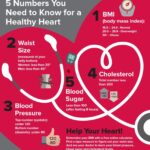How Lifestyle Choices Influence Physical Strength in Middle Adulthood

Understanding Physical Strength in Middle Adulthood
Physical strength in middle adulthood, generally defined as the ages between 40 and 65, is shaped by a combination of biological aging and daily lifestyle choices. As people enter this stage, natural processes such as hormonal shifts and muscle mass reduction begin to impact physical capacity. However, research consistently shows that lifestyle decisions-specifically related to diet, exercise, and stress management-play a critical role in determining how these changes affect overall health and physical strength [1] [2] .
The Impact of Exercise on Muscle Strength and Function
Regular physical activity is among the most effective ways to preserve and even enhance muscle strength during middle adulthood. Studies highlight that both current and cumulative physical activity levels are strongly associated with better physical performance and muscle retention in midlife. For example, adults who consistently engage in moderate to vigorous exercise-such as brisk walking, resistance training, or cycling-can slow the age-related decline in muscle mass, a process known as
sarcopenia
[2]
.
One study found that men who maintained higher levels of physical activity throughout adulthood had notably stronger grip strength and better lower body function than their less active peers. These benefits were cumulative, indicating that it is never too late to start, but ongoing commitment is key [4] .
Implementation Steps:
- Begin with weight-bearing exercises, such as squats or lunges, at least twice a week. Start with bodyweight movements and gradually incorporate light resistance as strength improves.
- Incorporate aerobic activity-like brisk walking, jogging, or swimming-most days of the week. Aim for at least 150 minutes of moderate-intensity activity.
- Include balance and flexibility exercises, such as yoga or tai chi, to help maintain neuromuscular function and prevent injuries.
Example: A 50-year-old who begins a twice-weekly resistance program, paired with regular walking, could experience improved muscle tone and greater ease with daily activities within several months. If you’re unsure how to start, consider consulting with a certified personal trainer or searching for “community fitness classes for adults” in your area.
Nutrition: Building Blocks for Strength
Nutrition is a foundational element in supporting muscle strength and overall health during middle adulthood. Consuming a balanced diet rich in lean proteins, whole grains, fruits, vegetables, and healthy fats supplies the body with necessary nutrients to maintain and repair muscle tissue [3] .
Adequate protein intake is especially important to counteract the natural decline in muscle mass. The Recommended Dietary Allowance (RDA) for protein is at least 0.8 grams per kilogram of body weight per day, but some experts suggest middle-aged adults may benefit from higher intake, especially if they are physically active. In addition, vitamin D, calcium, and antioxidants from fruits and vegetables support bone health and aid muscle function.
Implementation Steps:
- Plan meals to include a source of protein at every meal-such as chicken, fish, beans, or tofu.
- Choose whole grains over refined, and fill half your plate with colorful vegetables and fruits.
- Limit processed foods high in saturated fat, added sugar, and sodium.
- Consult a registered dietitian if you have specific nutritional concerns or want a tailored plan. You can find a dietitian by searching for “registered dietitian near me” or through your healthcare provider.
Example: A person in their 40s who switches from a diet high in processed foods to one focused on lean proteins, vegetables, and whole grains may notice improved energy, recovery after exercise, and easier weight management within a few months.
Stress Management and Its Effect on Physical Strength
Chronic stress is a common experience in middle adulthood, often due to career demands, family responsibilities, or financial pressures. Elevated stress levels can negatively impact physical health by increasing inflammation and disrupting hormonal balance, both of which contribute to muscle loss and reduced strength [1] .
Effective stress management techniques, such as mindfulness meditation, regular physical activity, and maintaining strong social connections, can help mitigate these effects. Prioritizing restful sleep and setting realistic boundaries at work and home are also key strategies.
Implementation Steps:
- Practice daily relaxation techniques, such as deep breathing or guided imagery, for 5-10 minutes.
- Engage in regular social activities or hobbies that provide enjoyment and a sense of accomplishment.
- Consider seeking support from a mental health professional if stress feels unmanageable. Many employers offer Employee Assistance Programs (EAPs), and you can also search for “licensed mental health counselor” in your area.
Example: Implementing a nightly relaxation routine and joining a local walking group can reduce perceived stress, support better sleep, and help preserve muscle function over time.
Other Lifestyle Choices: Smoking, Alcohol, and Sleep
Additional lifestyle habits, including tobacco use, alcohol consumption, and sleep quality, also have a significant impact on physical strength in middle adulthood. Smoking is linked to decreased muscle mass and impaired circulation, while excessive alcohol intake can hinder muscle growth and recovery [1] . Meanwhile, insufficient sleep disrupts the body’s ability to repair and build muscle tissue.
Implementation Steps:
- If you smoke, consider contacting your healthcare provider for resources or searching “smoking cessation programs” through reputable organizations such as the American Lung Association or your local health department.
- Limit alcohol intake to moderate levels-up to one drink per day for women and two for men, as recommended by the Centers for Disease Control and Prevention (CDC).
- Aim for 7-9 hours of sleep per night. Establish a consistent bedtime routine and limit screen time before bed.
Example: An individual who quits smoking and reduces alcohol intake can expect to see gradual improvements in physical stamina, lung capacity, and muscle recovery within several months.
Accessing Support and Resources
There are numerous ways to access services and support for making positive lifestyle changes in middle adulthood:

Source: radiosapiens.es
- Community Centers: Many offer affordable fitness classes and nutrition workshops tailored to adults. You can locate these by searching for “community fitness programs” or contacting your local recreation department.
- Healthcare Providers: Primary care doctors can provide individualized guidance and referrals to specialists, including physical therapists and dietitians.
- Workplace Wellness Programs: Many employers now offer health screenings, fitness incentives, and stress management workshops. Ask your HR department about available resources.
- Online Resources: Reputable websites from government health agencies, such as the National Institutes of Health (NIH), Centers for Disease Control and Prevention (CDC), and American Heart Association, offer evidence-based guidance on exercise, nutrition, and healthy lifestyle habits. Use official agency names and search for “adult fitness”, “healthy eating middle age”, or “stress management resources” for trustworthy information.
If you have a chronic health condition or physical limitation, consult your healthcare provider before starting a new exercise or nutrition program. They can recommend adaptive strategies or refer you to qualified specialists.
Key Takeaways and Next Steps
Middle adulthood is a pivotal time for making lifestyle choices that can either support or undermine physical strength and overall well-being. By prioritizing regular exercise, balanced nutrition, effective stress management, and healthy daily habits, adults can not only slow age-related physical decline but also improve quality of life. Change is possible at any stage-starting small and building sustainable routines is the most effective path forward.

Source: mimundomanualyartistico.blogspot.com
For personalized guidance, consult your healthcare provider or search for “adult wellness programs” and “registered dietitian near me” to find qualified support in your area. Remember, sustained effort and gradual improvements lead to the greatest long-term benefits.
References
- [1] Iowa State University (2022). Physical Development in Middle Adulthood.
- [2] Lumen Learning (2014). Physical Development – Middle Adulthood.
- [3] Number Analytics (n.d.). Navigating Middle Adulthood.
- [4] National Institutes of Health (2011). Physical Activity Across Adulthood and Physical Performance in Midlife.






